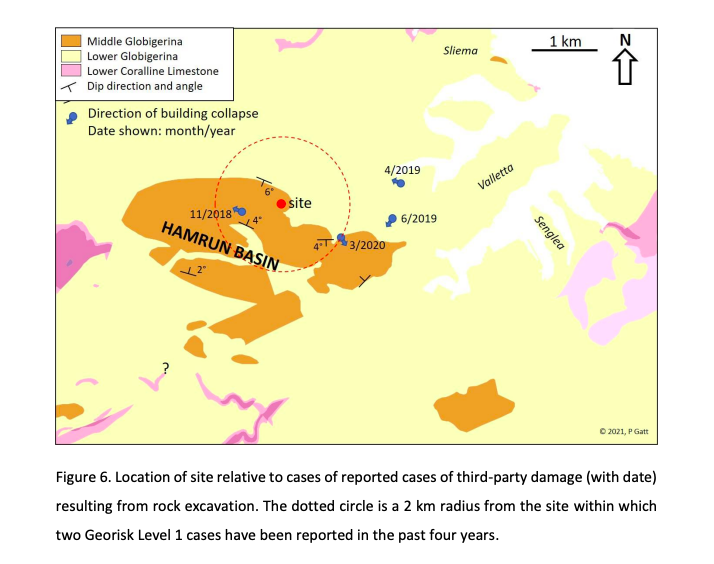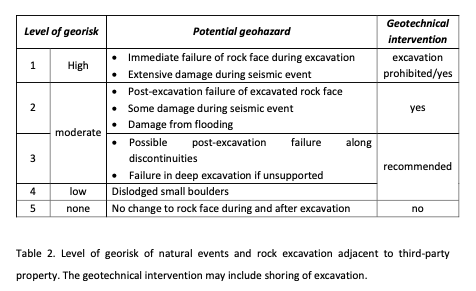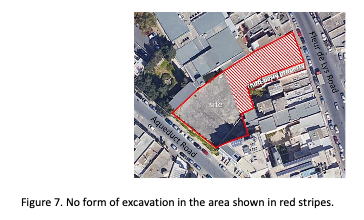Built On ‘Chalk’: This Alarming Study Explains Why B’Kara Site Is In Epicentre Of Malta’s Collapse Crisis

A geological study has found a worrying link between four building collapses in Malta and a site which could be the next to fall, indicating that the island’s collapse crisis could be in part related to the type of rock on which many of these properties were built.
The tragic crushing of Miriam Pace in her Ħamrun home in 2020 and a non-fatal collapse in Mriehel in 2018, both occurred within a 2km-radius from the home of Matthew Montebello, who commissioned a geological study amid fears that his home will crumble next due to construction next door.
“Both cases have occurred because of excavation in the Middle Globigerina Limestone Member,” the report by well-known geologist Peter Gatt states, referring to the two collapses.
Another two collapses, as his map below shows, were also close by.

Four collapses occurred within the same radius of Matthew Montebello's property.
The report, which was based on data obtained by borehole drilling on site, found that Montebello’s home is situated on a layer of rock that is particularly problematic and unpredictable.
“The rock tested at the site consists mostly of Middle Globigerina Limestone that shows a high level of fracturing and weathering at levels that are proposed to be excavated and will be exposed by the excavation. Borehole 2, which is adjacent to the concerned third-party property shows highly fractured levels in weak rock. In addition, a perched water table has been detected. Saturated rock has lower strength,” the study found.
The rock examined had a very high level of porosity, between 30 and 37% per cent, “which is comparable to that found in chalk”, the report states, adding later that this rock “can be categorised as weak rock”.
“This is a very high level of porosity that accounts for the weak nature of the rock. Only about half of the porosity is filled with water (15 to 18% moisture content in Table 1), indicating that most pores are very small (<1 μm) which is typical of fine-grained limestone.”
“The levels of rock which have been tested for moisture content show a high moisture content (>13% moisture) and that the rock is partly to fully saturated with water, indicating that most of the cores below 5 to 6 m depth are within the water table.”
The development next door to the Montebello family includes the construction of 28 garages at level -3, which would require excavation likely to exceed seven metres of rock.
According to Gatt’s report, the excavation poses “high risks of failure”, placing the Georisk at the highest possible level: Level 1.

The report categorises the Montebello property as having the highest risk of collapse: Level 1.
The report concludes: “The site is deemed to be within a Georisk Level 1 area and rock failure is very likely to occur should rock excavation proceed. In this scenario, catastrophic damage to third-party property adjacent to the site would occur should rock excavation proceed. Therefore, excavation adjacent to the concerned third-party property should be prohibited within a zone indicated in Figure 7.”

Excavation should be prohibited completely in the site marked red which is adjacent to the Montebello family home.
Read the full geological report here
It also recommends the prohibition of hydraulic jackhammer for excavation in the other areas of the site “because vibrations may increase discontinuities within the weak rock and cause movement in the rock”.
Gatt warns that the proposed excavation at the site will expose the perched water table.
“Groundwater is protected from pollution by the Groundwater Directive 2006/118/EC and the Water Framework Directive 2000/60/EC. Regulations for quarries in Malta require that a rock buffer kept between the surface of the water table and the maximum depth of excavation. This buffer of rock must be maintained at the site which would require that excavation be prohibited in the indicated area shown in Figure 7 where the top of the perched aquifer is close to the surface (Figure 5).”
“Any excavation outside the area of prohibition in Figure 7 should be accompanied by geotechnical interventions that can include piles to shore up the excavation and the application of shotcrete concrete to the excavated rock surface.”
Today the Building and Construction Agency said that no excavations will be permitted before a the conclusion of a geotechnical study, that must be carried out after the site is cleared of rubble. The BCA also dismissed Gatt’s report as “preliminary”, even though the risk of collapse was also outlined in the third version of the architect’s own method statement.
It is not known what the BCA’s geotechnical report is expected to establish and how it would be affected by the clearing of rubble. Gatt’s report was based on seven boreholes that were drilled and tested by a company commissioned by the developer.
The developer, who is also the architect and the Site Technical Officer, has not yet replied to Lovin Malta’s questions.
It is pertinent to note that Legal Notice 136 of 2019 removed the need for a geological investigation which was in the previous legal notice.
What do you make of this situation?